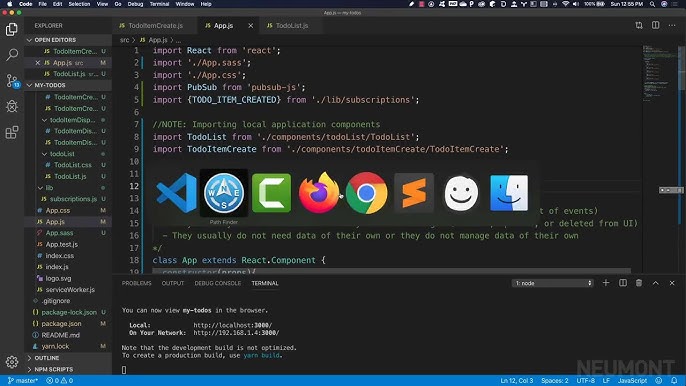

Could Not Load Dynamic Library ‘Cudnn64_8.Dll’; Dlerror: Cudnn64_8.Dll Not Found

| Problem | Description | Probable Cause | Solution |
|---|---|---|---|
| cudnn64_8.dll not found | This error occurs due to the unavailability of the dynamic library cudnn64_8.dll when attempting to run a CUDA enabled application. | Tends to happen if you have not installed the cuDNN library correctly or at all, or perhaps your PATH environment variable is misconfigured. | Install the correct version of cuDNN and ensure it’s properly added to your PATH. Make sure to follow official NVIDIA cuDNN installation guide . |
When dealing with the issue “Could Not Load Dynamic Library ‘cudnn64_8.dll’; dlerror: cudnn64_8.dll not found”, you’re most likely trying to run an application that uses the CUDA Deep Neural Network (cuDNN) library, which implements primitives for deep neural networks. The cuDNN library enhances performance and ease-of-use of deep learning frameworks which are frequently used to design AI models.
The inception of this error typically indicates that the cuDNN library has either been improperly installed or not installed at all. Another probable cause for this could be misconfiguration of your system’s PATH environment variable, preventing it from identifying the location of `cudnn64_8.dll`.
To overcome this difficulty, you need to ensure proper installation of the cuDNN library. Installing it is not as simple as running a setup file- it involves copying specific files to certain locations in your CUDA toolkit directory. Following this, the library must also be included in your system’s PATH environment variable, which provides information on where your operating system should look for executable files.
There are several websites that provide step-by-step guides on installing cuDNN. However, the most reliable source of information would always be the official NVIDIA cuDNN guidance. By following these accurate instructions, you should be able to eliminate the “Could Not Load Dynamic Library ‘cudnn64_8.dll’; dlerror: cudnn64_8.dll not found” error.
Remember, for cuDNN to work, it requires both the CUDA Toolkit and the appropriate GPU hardware to be installed on your machine. The versions of these installations should be compatible for correct functioning.When using deep learning frameworks like TensorFlow or PyTorch, you may encounter an error that goes something like this: “Could Not Load Dynamic Library ‘cudnn64_8.dll’; Dlerror: Cudnn64_8.dll Not Found”. This happens when the library cudnn64_8.dll is not found in environments where it was expected to be. Briefly speaking, cudnn64_8.dll plays a crucial role in GPU acceleration which is typically required for intensive computational operations done by deep learning algorithms.
ERROR: Could Not Load Dynamic Library 'cudnn64_8.dll'; Dlerror: cudnn64_8.dll not found
## The Role of cudnn64_8.dll in GPU Acceleration
Mentioning things CUDA, basically cudnn64_8.dll is part of NVIDIA’s CUDA platform. CUDA, which stands for Compute Unified Device Architecture, is a parallel computing platform and application programming interface model created by NVIDIA that allows software developers use a CUDA-enabled graphics processing unit (GPU) for general purpose processing.
The cudnn64_8.dll file comes as part of the CUDA Deep Neural Network library (cuDNN), a GPU-accelerated library of primitives for deep neural networks. It provides highly optimized routines for basic tasks such as forward propagation, backward propagation (errors), batch normalization, and filter convolutions.
It enables dramatic speed-ups by utilizing the GPU’s float point calculation ability for the heavy numeric tasks typically involved in deep learning. In short, if cuDNN is absent from your system, your deep learning libraries will either not work or revert to CPU computation, which could be many times slower.
So, cuDNN is one of the pivotal elements when setting up an environment for deep learning, particularly if you aim to utilize the full capacity of your GPU.
## How to Fix the ‘cudnn64_8.dll’ Error
Encountering the “Could Not Load Dynamic Library ‘cudnn64_8.dll'” error means either the cuDNN files have not been installed correctly or they are not accessible by your deep learning framework.
Here’s how you can remedy this issue:
– Make sure the correct version of cuDNN is downloaded and installed according to your CUDA Toolkit version. You can find the right cuDNN version on the NVIDIA cuDNN Archive page.
– Ensure that the cuDNN binaries are visible to the system. Typically, they’re placed in the CUDA bin directory (e.g., `C:\Program Files\NVIDIA GPU Computing Toolkit\CUDA\v11.1\bin`). Add this folder’s path to the system’s PATH environment variable.
– Check that your deep learning framework is compatible with the installed version of cuDNN. Frameworks like TensorFlow throughout their versions need different cuDNN and CUDA toolkit combinations.
– Restart your machine after making any changes to the environment variables or installing new libraries to ensure all changes are properly loaded.
In conclusion, cudnn64_8.dll plays a significant role in rendering both speed and effectiveness to your neural network models by harnessing the power of your system’s GPU. Understanding its functions and ensuring proper installation can provide noticeable performance improvements, alleviating the “Could Not Load Dynamic Library ‘cudnn64_8.dll’; DLL error: cudnn64_8.dll not found” issue.When you encounter the error message, “Could not load dynamic library ‘cudnn64_8.dll’; dlerror: cudnn64_8.dll not found,” it typically points to issues with loading dynamic libraries. Dynamic Libraries, also known as Shared Libraries in Unix or DLL files in Windows, allow multiple programs to utilize the same code at the same instant. They are loaded and unloaded from memory as required, which enables more efficient memory use.
Below are some common issues that relate:
1. Incorrect Installation or Removal of Software
When a specific software is incorrectly installed or improperly removed, it can result in missing dynamic library files – such as the cudnn64_8.dll.
Example:
└─ Problem: CUDA Toolkit's installation failure.
├─ Solution: Reinstall CUDA Toolkit.
2. Version Conflict
Dynamic Libraries are often given specific versions to resolve any potential conflicts between different applications using different iterations of the same library. If an application expects a particular version but finds a different one, the issue arises. In our case, losing cudnn64_8.dll could mean that we have another version of the CUDA toolkit installed rather than the one expected.
Example:
└─ Problem: Different versions of CUDA installed on the machine causing conflict.
├─ Solution: Uninstall all CUDA versions and install the expected version.
3. Environment Path
Environment paths are crucial when dealing with dynamic libraries. It’s through these that an operating system is capable of locating dynamic libraries when they’re requested by any program. If the cudnn64_8.dll is not added to the PATH environment variable, your machine won’t be able to locate the library file – triggering the error.
Example:
└─ Problem: cudnn64_8.dll not added to the PATH environment variable.
├─ Solution: Add the cudnn64_8.dll directory to PATH.
Solutions:
└─ Solution 1: Download the cuDNN v8.0.5 (November 9th, 2020), for CUDA 11.1 from NVIDIA’s site. ├─ Install the cuDNN library and place it inside the CUDA Toolkit directory. └─ Solution 2: Set the Windows Environment Variable PATH. ├─ Such that it includes this path: C:\Program Files\\NVIDIA Corporation\Neural Modules\Tools\cuDNN\cuda\bin
One must note that consistently and correctly handling dynamic libraries is essential for the smooth execution of any software project. Mismanagement can lead to runtime issues that can be hard to debug and resolve. It requires thoroughness when installing software or development tools, managing versions, and configuring our systems to effectively avoid such situations.Source.Quite common to a coder’s experience is coming across error notifications like, “Could Not Load Dynamic Library ‘Cudnn64_8.Dll’; Dlerror: Cudnn64_8.Dll Not Found.” This notification is an alert that your system could not find or load the ‘cudnn64_8.dll’ dynamic library. A DLL (Dynamic-Link Library) is essential in the Windows operating environment with one of its key functions being code sharing and data manipulation. Interestingly, these DLL files can be used across multiple applications simultaneously.
When you try to run an application that requires ‘cudnn64_8.dll,’ your system must find this library and if it isn’t successful in locating it, it flashes the error message. Understanding why this error occurs takes us down three potential paths:
1. If the CUDA Deep Neural Network library (cuDNN) is not installed correctly
2. If cuDNN is missing from the system path
3. If the wrong version of cuDNN is installed
To better grasp these stumbling blocks, we need to delve deeper into cuDNN’s role and significance. NVIDIA developed cuDNN as a GPU-accelerated library specifically for profound neural networks. It fosters the creation of software that learns from massive sets of data, known as machine learning. Reiteratively, the ‘cudnn64_8.dll’ file is a DLL of the cuDNN library.
Now, if cuDNN is not installed correctly, the file cudnn64_8.dll will not be generated, leading to the dreaded error manifesting whenever the file is needed but going unfound on your PC. Here’s a gentle tip: always cross-check installation processes to ensure they are effectively completed.
Secondly, the cuDNN could be missing from the system path. Here, the cudnn64_8.dll file does exist on your computer, but the system still flounders in finding it because the path to the file isn’t recorded appropriately. When setting up cuDNN, make sure you update your PATH environment variable to include the location of the ‘cudnn64_8.dll’ file. For instance, if you have placed ‘cudnn64_8.dll’ at “C:\cuda\bin”, this path must be added to the system path. You can effectuate this by:
setx PATH "%PATH%;C:\cuda\bin"
This command can be executed either on Command Prompt or PowerShell. Ensure that after running this script, you restart your terminal sessions for changes to apply.
Finally, you may have installed the wrong version of cuDNN. Do note that TensorFlow depends largely on specific versions of cuDNN. For example, TensorFlow 2.4 envisages cuDNN 8.0. So, perhaps the cudnn64_8.dll file is heeded for TensorFlow 2.4, but you have crudely installed TensorFlow 2.3 which links to ‘cudnn64_7.dll’.
You can verify your TensorFlow and cuDNN align by cross-verifying their versions via Python REPL:
>>> import tensorflow as tf >>> print(tf.__version__)
This will disclose your TensorFlow version. To validate TensorFlow compatibility, you can navigate to TensorFlow’s provided build configurations documentation.
These are the primary scenarios inciting this error in question. It’s recommended to follow these steps: revisit cuDNN’s installation process, confirm the correct path is established to locate the ‘cudnn64_8.dll’ file, and ascertain your cuDNN version matches your TensorFlow version.The error “Could Not Load Dynamic Library ‘Cudnn64_8.dll’; Dlerror: Cudnn64_8.Dll Not Found” is a common issue when setting up Nvidia CUDA Toolkit. The DLL files are vital for the smooth running of applications since they contain the code that multiple programs can use simultaneously. When the cudnn64_8.dll file is missing, it implies that your system or the application you’re using cannot find the required DLL file.
There are several reasons why this error message may pop up:
– NVIDIA CUDA or cuDNN SDK might be installed incorrectly.
– Environmental variables might not be set correctly.
– The version of cuDNN might be incompatible with the installed version of TensorFlow.
To troubleshoot and solve this problem, I would suggest the following approaches:
Reinstall NVIDIA CUDA and cuDNN
If you have recently updated your NVIDIA GPU drivers, you need to ensure that the correct version of the CUDA toolkit is installed that aligns with the driver’s version. There could be an incompatibility between CUDA and the cuDNN library if they are not of matching versions. You should check the compatibility on the official NVIDIA support matrix page.
Install the NVIDIA CUDA toolkit and cuDNN again making sure the versions are compatible with each other and also meet the TensorFlow requirements. Make sure to follow the official installment guide by NVIDIA for accurate and detailed steps.
Once done, try executing your program or script again to see if the error persists.
Set Environment Variables Correctly
The error could be because your system does not know where to look for the dll file. Setting the PATH environment variable ensures that the system knows where to locate the files.
You can add the path by following these steps:
1. Navigate to This PC -> Properties -> Advanced system settings
2. Click on “Environment Variables”.
3. In the System variables section, look for the variable named Path and click Edit.
4. In the window that pops up, click New, then Browse and navigate to the bin folder of your CUDA installation directory.
5. Press OK to confirm changes.
Here’s an example of how you set your PATH variable:
SET PATH=C:\Program Files\NVIDIA GPU Computing Toolkit\CUDA\v11.0\bin;%PATH% SET PATH=C:\Program Files\NVIDIA GPU Computing Toolkit\CUDA\v11.0\extras\CUPTI\lib64;%PATH% SET PATH=C:\Program Files\NVIDIA GPU Computing Toolkit\CUDA\v11.0\include;%PATH%
Verify Compatibility Version
Lastly, ensure that the versions of Python, Tensorflow, CUDA, and cuDNN you are using are all mutually compatible. Sometimes, the cudnn64_8.dll file could fail to load simply because the specific version you installed is incompatible with another piece of software using it. Have a look at the Tested build configurations on Tensorflow’s website for more information on compatible versions.
Long story short, ‘Could Not Load Dynamic Library ‘Cudnn64_8.dll’; Dlerror: Cudnn64_8.dll Not Found’ is caused by either incorrect installation, incorrect environment variables, or compatibility issues. Work with the most suitable solution to your context and I hope you will get it resolved quickly!If you’ve landed here because you’re encountering the “Could Not Load Dynamic Library ‘cudnn64_8.dll’; Dlerror: cudnn64_8.dll Not Found” error, well, you’re in luck. The issue you’re facing is likely related to either a missing or incorrectly installed cuDNN library which can indeed be tricky. I will kindly guide you through an analytical, comprehensive rundown of how you can update and install your cudNN files correctly, ensuring all relevant factors are taken into account.
The error message is clear enough to let us know that TensorFlow cannot find the cudNN library file ‘
cudnn64_8.dll
‘. To start troubleshooting this problem, follow these steps.
The Correct Version of CUDA Toolkit and cudNN Library
Firstly confirm that you’ve installed the correct versions of CUDA Toolkit and cudNN Library that correspond with your TensorFlow version. Check the TensorFlow GPU support page for the versions you should be using.
Downloading and Installing the cudNN Files
After confirming you have the right CUDA Toolkit version:
1. Go to NVIDIA’s cuDNN download page.
2. You need to log in with your NVIDIA developer account to access their download section. If you don’t have an account yet, you can easily create one.
3. Once logged in, select the cuDNN version that corresponds with your CUDA Toolkit version.
4. Download your respective software. For instance, if you’re using a Windows system, opt for the cuDNN Library for Windows.
After downloading the cuDNN zip files, extract them. The contents typically include the ‘
.dll
‘, ‘
.lib
‘, and ‘
.h
‘ files that we’ll be focusing on.
Next, navigate to where you installed your CUDA Toolkit (It’s usually at ‘
C:\Program Files\NVIDIA GPU Computing Toolkit\CUDA\v11.0
‘). In that folder, you will find three key folders; ‘
bin
‘, ‘
include
‘, and ‘
lib\x64
‘. Here, overlay the extracted cuDNN library files like so:
- The .dll files go into the ‘
bin
‘ folder.
- The .h files go into the ‘
include
‘ folder.
- The .lib files go into the ‘
lib\x64
‘ folder.
Invoke caution while doing this procedure as placing these files in the wrong locations could lead to unexpected errors.
Path Environment Variable Settings
Ensure the CUDA Toolkit path is added to your environment variables. This guides TensorFlow to where it should look for these libraries. The path is usually ‘
C:\Program Files\NVIDIA GPU Computing Toolkit\CUDA\v11.0\bin
‘ and ‘
C:\Program Files\NVIDIA GPU Computing Toolkit\CUDA\v11.0\libnvvp
‘. Add these paths via My Computer > Properties > Advanced System Settings > Environment Variables > Path > New.
Finally, restart your computer. This ensures all changes are initialized and allows TensorFlow to successfully find and import cudNN. Now when you try running your code again, it should work without raising the ‘Cudnn64_8.Dll’ error.
To recheck if CUDA and cuDNN are correctly set up, implement the below python code:
from tensorflow.python.client import device_lib
def get_available_gpus():
local_device_protos = device_lib.list_local_devices()
return [x.name for x in local_device_protos if x.device_type == 'GPU']
get_available_gpus()
You should now get ‘
/device:GPU:0
‘ as an output, signaling that CUDA and cuDNN are properly configured and ready for use.
Remember, everything in coding comes down to attention to detail. From maintaining correct file hierarchy to making sure we’re manipulating appropriate environment variables, the smallest misstep can cause a considerable hindrance. Nonetheless, armed with the correct information and guided instruction, like what’s detailed above, everyone can swiftly prevail over irritating DLs such as the dreaded cudnn64_8.dll failure.
Working with and managing DLL (Dynamic-Link Library) files is a vital part of maintaining optimal performance in system frameworks and applications, especially for programmers and developers. Misplacing or losing these DLL files can lead to errors such as ‘Could not load Dynamic Library’ ‘cudnn64_8.dll’ DLerror: cudnn64_8.dll not found’. This can halt execution or even affect overall system performance.
To prevent such unpleasant scenarios, here are some best practices that can be applied to prevent the loss or misplacement of DLL files:
Organize Your Files Effectively
- Maintaining a well-organized file structure within your projects can help you manage DLL dependencies better. Make sure all relevant files are in the appropriate sub-directories;
Maintain an Up-to-Date Code Repository
- Using services like GitHub, GitLab, or Bitbucket can serve as a reliable backup for your dll and related files. These cloud-based code repositories give you the flexibility to clone the entire project along with its dependencies on other machines without having to worry about missing files;
Use a Robust DLL Management Software
- A reliable DLL management or dependency management software can assist you in keeping track of your current and upcoming DLL dependencies across different projects. Tools such as NuGet for .NET projects, and npm for Node.js can be quite useful;
Path Environment Variable
- Ensure that the DLLs exist within the directories specified in your PATH environment variable. The system checks these directories for executable files or DLLs when it cannot find them in the current directory;
// For instance, adding a directory to the PATH can be done so in Windows Command Prompt as follows: SET PATH=%PATH%;C:\path-to-your-dll.
Reinstalling Associated Applications/Bundles
- When specific .dll error messages occur such as ‘cudnn64_8.dll not found’, one robust solution could be reinstalling the program that utilizes this library. In the context of ‘cudnn64_8.dll’, this could mean reinstalling your CUDA Toolkit because cudnn is built for use with Nvidia’s machine learning framework, CUDA.
In conclusion, these steps can provide effective ways to combat DLL nightmares such as ‘Could not load Dynamic Library’. Each method has its unique strengths in combating and mitigating file loss. By consolidating all these strategies together, it becomes far more manageable to maintain your DLL files and prevent associated errors during runtime.
Certainly, spotting the error “Could Not Load Dynamic Library ‘Cudnn64_8.Dll’; Dlerror: Cudnn64_8.Dll Not Found” can be frustrating. Rest assured, this is an issue that can be managed with a few developmental solutions.
Firstly, it’s vital to understand why cudnn64_8.dll (a CUDA Deep Neural Network library) could not be found. The message occurs because of two main reasons: It may be due to the absence of this dynamic library in your system, or it might be installed but cannot be located by the operating system.
The following strategic maneuvers should help recover the missing ‘Cudnn64_8.Dll’ file:
1. DLL File Download and Installation:
The most straightforward method to address this quandary is by downloading the missing dll file directly. Make sure to download from trusted sources like NVIDIA’s official website, where you can find multiple versions of the CUDA Deep Neural Network (cuDNN) library.
Once downloaded, extract the content of its local CUDA directory to your existing CUDA Toolkit directory (by default, it’s usually at ‘C:\Program Files\NVIDIA GPU Computing Toolkit\CUDA\v11.2’ in Windows). Now for Windows users, copy the ‘cudnn64_8.dll’ present within the downloaded package to ‘C:\Windows\System32’.
@echo off xcopy /Y /K "[DLL_Download_Location]\bin\cudnn64_8.dll" "C:/Windows/System32"
2. Reinstalling The CUDA Toolkit:
A failed or improper installation of CUDA toolkit can trigger this bothersome error too. So, consider downloading and reinstalling the CUDA Toolkit pertaining to your respective graphics card specifications from NVIDIA’s official site.
3. Updating System Path Variables:
It is equally important to update your system environmental path variable while setting up new libraries. After successful installation of CUDA toolkit or manual installation of cuDNN check whether ‘CUDNN_HOME’ points to the right directory.
For Windows:
SET PATH=C:\Program Files\NVIDIA GPU Computing Toolkit\CUDA\v11.2;%PATH% SET PATH=C:\Program Files\NVIDIA GPU Computing Toolkit\CUDA\v11.2\libnvvp;%PATH% SET PATH=%PATH%;C:\tools\cuda\bin
4. DLL Fixers:
Although it sounds fancy, try to avoid third-party DLL fixer software unless completely necessary since they are highly invasive and might cause more problems than they solve.
No matter which strategy you adopt, make sure that the cudnn64_8.dll file corresponds to the exact CUDA Toolkit version that you have on your system. Otherwise, you will face compatibility issues. Furthermore, it is always a savvy move to keep all your drivers and system software updated to their latest versions to prevent similar glitches.
Hopefully, these strategies provide a robust solution to recover the missing ‘Cudnn64_8.Dll’; ensuring a smooth coding process ahead!Let’s break down the error message, “Could Not Load Dynamic Library ‘cudnn64_8.dll’; dlerror: cudnn64_8.dll not found.” This implies there’s a missing dynamic link library (DLL) essential in resolving this issue. The DLL that your application is attempting to load is called cudnn64_8.dll, which could have been deleted inadvertently or never installed on your computer. Usually, this DLL forms part of the CUDA toolkit from NVIDIA utilized in accelerating deep learning frameworks.
/* The following code snippet would illustrate an example where cudnn might be used */ #include<cudnn.h> // ... cudnnHandle_t cudnn; cudnnCreate(&cudnn); // ...
The real problem arises if the cudnn64_8.dll file is not located in a known DLL repository directory or the PATH environment variable has not been adequately set to lead to cudnn64_8.dll. Consequently, the application needing that DLL won’t locate it and will return the error.
Here are step-by-step procedures to eliminate this error:
– Verify Installation: Ensure CUDA toolkit, along with cuDNN library from NVIDIA’s website, is properly installed on your computer.
– Check Environment Variables: Validate that the PATH system environment variable includes the location of the cudnn64_8.dll.
C:\Program Files\NVIDIA GPU Computing Toolkit\CUDA\v10.0\bin
– Re-install Components: If the problem persists even after proper installation and setting up, try uninstalling and reinstalling these components, which might alleviate any hiccups caused by failed installations.
Remember, the version of your CUDA Toolkit and the versions of all software dependent on it should align; otherwise, discrepancies might also trigger errors like this one. Be sure to match versions wherever possible for smooth operation. Also, implementing these changes may require administrative rights to your operating system and always remember to restart your IDE or command prompt session after making updates to system environment variables. If the problem persists despite these measures, consider reaching out to community forums like StackOverflow or NVIDIA’s developer forum for assistance as the dilemma may be more context-specific.












